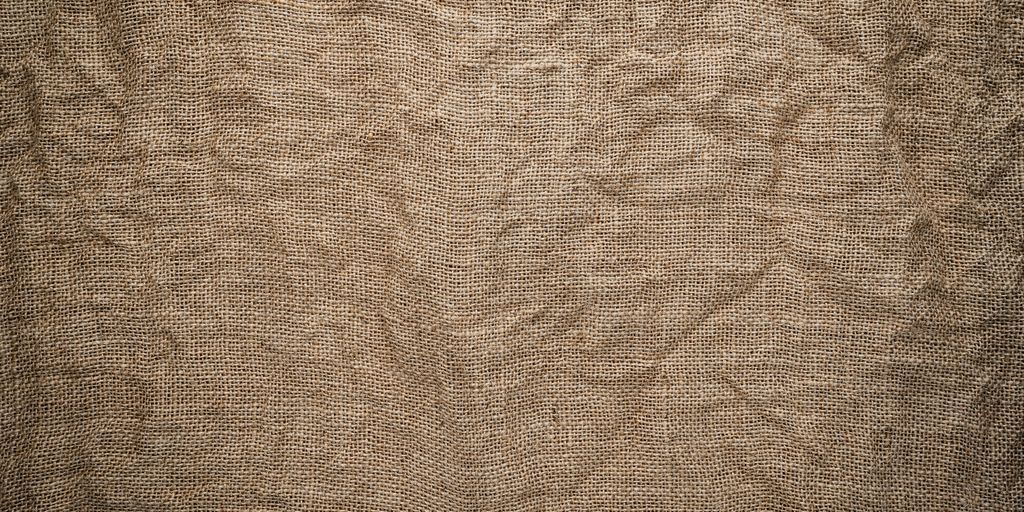Business
Sustainable Fabrics: What You Need to Know

In today’s world, the term ‘sustainable fabrics’ is becoming increasingly common, appearing on many product labels. This shift is essential as consumers are more conscious of their choices and their impact on the environment. Understanding what makes a fabric sustainable is crucial, as it helps in making informed decisions that benefit both the planet and our wardrobes. In this article, we will explore the key aspects of sustainable fabrics, their environmental impact, and the best options available.
Key Takeaways
- Sustainable fabrics are made from eco-friendly materials that have minimal impact on the environment.
- Conventional fabrics often contribute to pollution and waste, making sustainable choices vital for a healthier planet.
- Popular sustainable fabrics include organic cotton, hemp, and TENCEL, each offering unique benefits.
- Certifications like GOTS and Fair Trade ensure that fabrics meet sustainability standards, making it easier for consumers to choose responsibly.
- Caring for sustainable fabrics properly can extend their life and reduce waste, promoting a more sustainable wardrobe.
Understanding Sustainable Fabrics
Definition of Sustainable Fabrics
Sustainable fabrics are materials made from eco-friendly resources. This includes fibres that are grown without harmful chemicals or those that are recycled. These fabrics aim to reduce the negative impact on the environment.
Importance of Sustainable Fabrics
Choosing sustainable fabrics is crucial for several reasons:
- Environmental Protection: They help in reducing pollution and conserving resources.
- Health Benefits: They are often free from toxic chemicals, making them safer for wearers.
- Support for Ethical Practises: Many sustainable fabrics are produced under fair working conditions.
Common Misconceptions
There are many myths about sustainable fabrics:
- All natural fabrics are sustainable: Not all natural materials are eco-friendly; it depends on how they are produced.
- Sustainable fabrics are always more expensive: While some may cost more, many affordable options exist.
- Sustainability is just a trend: In reality, it’s a necessary shift towards protecting our planet.
Sustainable fabrics are not just a choice; they represent a commitment to a healthier planet and a better future for all.
In this article, we will explore the rigorous process of approving suppliers with a strong emphasis on maintaining organic integrity. It highlights the importance of transparency and ethical practises in sourcing organic products, ensuring that suppliers meet strict standards. The piece also reflects on the broader implications for sustainability in the industry.
The Environmental Impact of Conventional Fabrics
Water Pollution
Conventional fabrics, such as cotton and polyester, often contribute significantly to water pollution. The production processes can release harmful chemicals into waterways, affecting aquatic life and drinking water quality. For instance:
- Cotton farming uses pesticides that can leach into rivers.
- Dyeing processes for synthetic fabrics often involve toxic substances.
- Wastewater from factories can contain heavy metals and dyes.
Greenhouse Gas Emissions
The fashion industry is a major contributor to greenhouse gas emissions. The production of conventional fabrics involves:
- Energy-intensive processes that rely on fossil fuels.
- Deforestation for land use, which reduces carbon absorption.
- Transportation emissions from global supply chains.
| Fabric Type | CO2 Emissions (kg per kg of fabric) |
|---|---|
| Cotton | 2.5 |
| Polyester | 3.0 |
| Nylon | 4.0 |
Microplastic Pollution
Many synthetic fabrics, like polyester and nylon, shed microplastics during washing. These tiny particles:
- Enter waterways and oceans, harming marine life.
- Accumulate in the food chain, affecting human health.
- Are difficult to philtre out in wastewater treatment plants.
The impact of conventional fabrics on the environment is profound, affecting not just the planet but also our health and future generations.
By understanding these issues, consumers can make more informed choices about the fabrics they support, ultimately leading to a more sustainable future.
Top Sustainable Fabrics to Consider
Organic Cotton
Organic cotton is a popular choice among sustainable fabrics. It is grown without harmful chemicals and uses less water than conventional cotton. This fabric is not only eco-friendly but also produces high-quality items that last longer. Brands like Bhumi are known for their luxurious organic cotton products.
Hemp
Hemp is another excellent sustainable fabric. It grows quickly and requires minimal water and no pesticides. Hemp fabric is strong, durable, and biodegradable, making it a great option for eco-conscious consumers. Additionally, it enriches the soil it grows in, promoting healthier ecosystems.
TENCEL
TENCEL, made from sustainably sourced wood pulp, is known for its softness and breathability. This fabric is produced in a closed-loop process, which recycles water and solvents, reducing waste. TENCEL is also biodegradable, making it a fantastic choice for those looking to minimise their environmental impact.
| Fabric Type | Key Benefits | Environmental Impact |
|---|---|---|
| Organic Cotton | Grown without chemicals, durable | Low water usage |
| Hemp | Fast-growing, enriches soil | Minimal water needed |
| TENCEL | Soft, breathable, biodegradable | Closed-loop production |
Choosing sustainable fabrics like these not only helps the environment but also supports ethical practises in the fashion industry. By opting for materials that are better for the planet, you contribute to a more sustainable future.
Innovative Sustainable Fabrics
Piñatex
Piñatex is a groundbreaking fabric made from pineapple leaves. This innovative material repurposes agricultural waste, providing farmers with new income opportunities. While it’s a great alternative to traditional vegan leather, it’s important to note that 20% of Piñatex is still made from plastic. However, this plastic is vegetable-based and biodegradable under controlled conditions, making it a more sustainable choice than conventional leather.
Econyl
Econyl is a type of recycled nylon created from discarded materials, including ocean fishing nets and industrial plastic. This fabric helps reduce waste and the resources needed for new nylon production. However, it’s worth mentioning that Econyl can shed microplastics when washed, so it’s best suited for items like shoes that don’t require frequent washing.
Microsilks
Microsilks, developed by Bolt Threads, mimic the properties of spider silk without using any spiders. This biodegradable material is made through bioengineering and fermentation, resulting in a strong and soft fabric that can be used in various applications.
Summary Table of Innovative Fabrics
| Fabric | Source Material | Key Benefits | Considerations |
|---|---|---|---|
| Piñatex | Pineapple leaves | Repurposes waste, supports farmers | Contains 20% plastic |
| Econyl | Recycled nylon | Reduces waste, uses discarded materials | Sheds microplastics |
| Microsilks | Bioengineered materials | Strong, soft, biodegradable | New technology, still developing |
Choosing innovative sustainable fabrics not only helps the environment but also supports new economic opportunities for communities.
By exploring these options, consumers can make more informed choices that contribute to a sustainable future.
Certifications to Look For
GOTS Certification
The Global Organic Textile Standard (GOTS) is a leading certification for organic textiles. It ensures that the entire production process, from the raw material to the finished product, meets strict environmental and social criteria. This means that if you see a GOTS label, you can trust that the fabric is sustainably sourced and produced.
Fair Trade Certification
Fair Trade Certification focuses on ensuring fair wages and safe working conditions for workers in the textile industry. This certification helps promote ethical practises and supports communities by ensuring that producers receive a fair price for their goods.
OEKO-TEX Certification
The OEKO-TEX certification tests textiles for harmful substances, ensuring that they are safe for human use. While it does allow for some chemicals, it is a step towards safer fabrics. Look for this label to ensure that your clothing is free from harmful substances.
Summary of Certifications
| Certification | Focus Area | Key Benefits |
|---|---|---|
| GOTS | Organic production | Comprehensive sustainability standards |
| Fair Trade | Worker rights | Fair wages and safe working conditions |
| OEKO-TEX | Safety testing | Assurance of non-toxic materials |
Conclusion
When shopping for sustainable fabrics, always check for these certifications. They are your best guide to ensuring that your choices are not only eco-friendly but also ethically produced.
Understanding these certifications is crucial in a world where greenwashing is common. By being informed, you can make better choices for the planet and its people.
How to Identify Sustainable Fabrics

Reading Labels
When shopping for clothes, reading labels is crucial. Look for certifications that indicate a fabric is sustainable. Here are some key labels to watch for:
- GOTS Certified: This means the fabric is made from organic fibres and meets strict environmental and social criteria.
- OEKO-TEX: This certification ensures that the fabric is free from harmful substances.
- Fair Trade: This label indicates that the workers involved in the production were treated fairly and paid a living wage.
Researching Brands
Not all brands are created equal. To ensure you’re making a sustainable choice, consider:
- Brand Transparency: Does the brand share information about its sourcing and manufacturing processes?
- Sustainability Practises: Look for brands that prioritise eco-friendly practises, such as using recycled materials or organic fibres.
- Customer Reviews: Check what other customers say about the brand’s commitment to sustainability.
Understanding Certifications
Certifications can help you identify truly sustainable fabrics. Here are a few important ones:
- Global Organic Textile Standard (GOTS): Ensures organic status from harvesting through manufacturing.
- Fair Trade Certified: Guarantees fair wages and working conditions for farmers and workers.
- OEKO-TEX Standard 100: Tests for harmful substances in textiles.
Sustainable fabrics are not just a trend; they represent a commitment to a healthier planet and ethical practises. By choosing wisely, you can make a positive impact.
In summary, identifying sustainable fabrics involves careful label reading, researching brands, and understanding certifications. By doing so, you can contribute to a more sustainable fashion industry while enjoying quality clothing. Remember, organic cotton is a great choice, as it promotes environmental health and supports ethical farming practises.
Benefits of Choosing Sustainable Fabrics
Choosing sustainable fabrics comes with numerous advantages that benefit not just the environment but also your personal choices and finances.
Environmental Benefits
- Reduced Waste: Sustainable fabrics often come from recycled materials, which helps to minimise waste in landfills.
- Lower Carbon Footprint: Many sustainable options, like organic cotton, are grown without harmful chemicals, leading to lower greenhouse gas emissions.
- Conservation of Resources: Sustainable fabrics typically use less water and energy during production compared to conventional fabrics.
Economic Benefits
- Long-lasting Quality: Sustainable fabrics are often made to last, meaning you won’t need to replace them as frequently.
- Potential Savings: While the initial cost may be higher, the durability of sustainable fabrics can lead to savings over time.
- Support for Local Economies: Many sustainable brands focus on ethical production, which can help support local communities.
Social Benefits
- Fair Labour Practises: Many sustainable fabric brands ensure fair wages and safe working conditions for their workers.
- Community Support: Purchasing from sustainable brands often means supporting initiatives that benefit local communities.
- Awareness and Education: Choosing sustainable fabrics helps raise awareness about environmental issues and encourages others to make responsible choices.
By opting for sustainable fabrics, you are not just making a fashion choice; you are contributing to a healthier planet and a fairer society.
In summary, the benefits of choosing sustainable fabrics are vast, impacting the environment, economy, and society positively. Making informed choices can lead to significant changes.
Challenges in the Sustainable Fabric Industry

Greenwashing
One of the biggest issues in the sustainable fabric industry is greenwashing. This is when companies falsely claim their products are eco-friendly to attract customers. Many brands use buzzwords like "sustainable" without any real commitment to environmentally friendly practises. This can confuse consumers who genuinely want to make sustainable choices.
Higher Costs
Sustainable fabrics often come with a higher price tag. This is due to the more expensive materials and ethical production processes involved. While investing in sustainable fashion is important, not everyone can afford these options, which limits accessibility.
Limited Availability
Finding sustainable fabrics can be a challenge. Many stores still primarily stock conventional fabrics, making it hard for consumers to find eco-friendly options. This limited availability can discourage people from choosing sustainable alternatives.
The journey towards sustainable fashion is not just about the materials; it’s about changing the entire industry mindset.
Summary of Challenges
| Challenge | Description |
|---|---|
| Greenwashing | Misleading claims about sustainability by brands. |
| Higher Costs | Sustainable fabrics are often more expensive than conventional options. |
| Limited Availability | Eco-friendly fabrics are not widely available in many retail stores. |
Future of Sustainable Fabrics
Technological Advancements
The future of sustainable fabrics is bright, thanks to new technologies. Innovations like 3D printing and bio-fabrication are changing how we create textiles. For instance, materials made from mycelium and other organic substances are being developed, which could revolutionise the industry.
Consumer Trends
More consumers are becoming aware of their choices. They are increasingly looking for eco-friendly options. This shift in mindset is pushing brands to adopt sustainable practises. As a result, we can expect to see a rise in demand for sustainable fabrics in the coming years.
Policy Changes
Governments are starting to take action. New regulations are being introduced to promote sustainable practises in the textile industry. This includes stricter guidelines on waste management and the use of harmful chemicals. Such policies will encourage brands to be more responsible in their production processes.
The future of sustainable fabrics is not just about materials; it’s about creating a transparent supply chain that ensures ethical practises from start to finish.
In summary, the future of sustainable fabrics will be shaped by technological advancements, changing consumer trends, and supportive policy changes. As these elements come together, we can look forward to a more sustainable and responsible fashion industry.
Sustainable Fabric Care Tips
Washing and Drying
To keep your sustainable fabrics in great shape, follow these tips:
- Use a mild detergent to avoid harsh chemicals.
- Wash in cold water to save energy and protect the fabric.
- Air dry whenever possible to reduce energy use and prevent damage.
Repairing and Upcycling
Instead of throwing away damaged clothes, consider these options:
- Sew up small tears to extend the life of your garments.
- Repurpose old fabrics into new items, like bags or cleaning cloths.
- Learn basic sewing skills to make simple repairs yourself.
Proper Storage
Storing your sustainable fabrics correctly can help them last longer:
- Keep them in a cool, dry place to prevent mould and mildew.
- Use breathable bags instead of plastic to allow air circulation.
- Avoid overcrowding your wardrobe to prevent creasing and damage.
Taking care of your sustainable fabrics not only helps them last longer but also reduces waste, making a positive impact on the environment.
By following these care tips, you can ensure that your sustainable fabrics remain in excellent condition, reducing the need for replacements and contributing to a more sustainable future. Remember, every small action counts!
Case Studies of Sustainable Fabric Brands
Bhumi
Bhumi is a brand that focuses on organic cotton. They ensure that their cotton is grown without harmful chemicals, making it a better choice for the environment. Their products are not only eco-friendly but also luxurious, allowing consumers to enjoy sustainable fashion without compromising on quality.
Stella McCartney
Stella McCartney is a pioneer in sustainable fashion. She uses innovative materials and practises to create stylish clothing. The brand is known for its commitment to ethical production, ensuring that workers are treated fairly and that the environment is protected.
Patagonia
Patagonia is famous for its commitment to sustainability. They use recycled materials in their products and promote a culture of repair and reuse. Their mission is to reduce waste and encourage consumers to think about the lifecycle of their clothing.
| Brand | Key Focus | Sustainable Practises |
|---|---|---|
| Bhumi | Organic Cotton | Chemical-free farming |
| Stella McCartney | Ethical Production | Innovative materials |
| Patagonia | Recycling | Repair and reuse culture |
Choosing brands like Bhumi, Stella McCartney, and Patagonia not only supports sustainable practises but also encourages a shift towards a more responsible fashion industry.
By understanding these brands and their practises, consumers can make informed choices that benefit both the planet and their wardrobes.
Conclusion
In summary, choosing sustainable fabrics is a vital step towards protecting our planet. By understanding what makes a fabric sustainable, we can make smarter choices when shopping. Fabrics like organic cotton, hemp, and TENCEL are not only better for the environment but also provide quality and comfort. As consumers, we hold the power to influence the fashion industry by opting for eco-friendly materials. Every small decision counts, and together, we can create a positive impact on our world.
Frequently Asked Questions
What are sustainable fabrics?
Sustainable fabrics are materials that are made in ways that are friendly to the environment. This means they are sourced from eco-friendly resources or recycled materials.
Why should I choose sustainable fabrics over conventional ones?
Choosing sustainable fabrics helps reduce pollution and waste. It also supports fair working conditions for those who make the clothes.
Are all natural fabrics sustainable?
Not all natural fabrics are sustainable. Some may be made with harmful chemicals or through processes that damage the environment.
How can I tell if a fabric is sustainable?
Look for labels and certifications that indicate the fabric is eco-friendly, like GOTS or Fair Trade.
What are some examples of sustainable fabrics?
Examples include organic cotton, hemp, TENCEL, and Econyl, which is made from recycled materials.
Is sustainable fabric more expensive?
Yes, sustainable fabrics can be pricier, but they often last longer and have a lower environmental impact.
Can I wash sustainable fabrics like regular clothes?
Yes, but it’s best to follow the care instructions on the label to keep them in good condition.
What is the future of sustainable fabrics?
The future looks bright with new technologies and consumer demand for eco-friendly options driving innovation.
-

 Stock Market7 days ago
Stock Market7 days agoUS Stocks Soar as Court Blocks Trump Tariffs and Nvidia Delivers Strong Earnings
-

 Press Release6 days ago
Press Release6 days agoCV5 Capital Announces Standout Performance of Cryptanium Fund I SP, Beating Industry Benchmarks
-

 Government7 days ago
Government7 days agoCongress Passes Continuing Resolution, Averting Government Shutdown
-

 Government6 days ago
Government6 days agoExperts Warn of U.S. Slide Towards Authoritarianism Under Trump Administration
-

 Alternative Energy7 days ago
Alternative Energy7 days agoShalom Lamm on Rising Rent and the Future of Housing
-

 Business3 days ago
Business3 days agoS&P 500 Soars in Best May in Decades Amid Tariff Relief and Nvidia’s Surge
-

 Healthcare4 days ago
Healthcare4 days agoAttention Economy Arms Race: Reclaim Your Focus in a World Designed to Distract You
-

 Immigration3 days ago
Immigration3 days agoTrump’s Immigration Crackdown: Legal Battles and Policy Shifts










